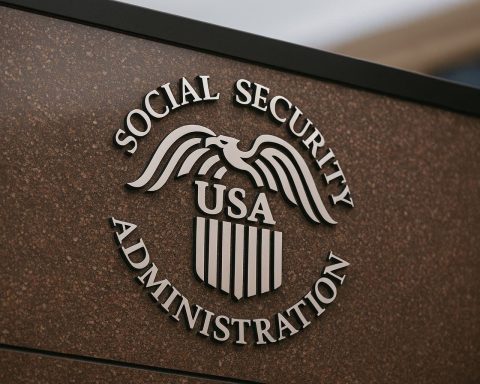As of November 19, 2025, Americans have official IRS numbers for how much they can stash in tax-advantaged retirement accounts in 2026 — and the limits are going up.
Key takeaways
- 401(k), 403(b), 457 and TSP contribution limit climbs to $24,500 in 2026, up from $23,500 in 2025. [1]
- IRA contribution limit rises to $7,500, with a $1,100 catch‑up for savers age 50+, for a total of $8,600. [2]
- High earners will face new Roth-only catch‑up rules for 401(k)-style plans starting in 2026, while special “super” catch‑up limits for ages 60–63 remain in place. [3]
IRS unlocks more room to save in 2026
On November 13, 2025, the IRS released Notice 2025‑67 and news release IR‑2025‑111, formally announcing cost‑of‑living adjustments for retirement plans that take effect on January 1, 2026. [4]
The headline change: workers will be able to contribute more to most major retirement accounts, including 401(k), 403(b), governmental 457 plans, the federal Thrift Savings Plan and IRAs. For 2026:
- The employee contribution cap for 401(k), 403(b), governmental 457 and TSP plans jumps to $24,500 (up from $23,500 in 2025). [5]
- The IRA annual contribution limit increases to $7,500 (from $7,000). [6]
These adjustments follow the usual inflation-indexed formula the IRS applies each year, but they arrive at a time when many households feel behind. A Vanguard study cited by CBS News found that only about four in ten Americans think they’re on track to maintain their current lifestyle in retirement, and just 14% maxed out their 401(k) contributions in 2024. [7] A recent Goldman Sachs survey found that roughly 42% of workers have no disposable income left after basic expenses, leaving little room to save. [8]
In other words: the IRS just gave you more space to save — but using that space is still the hard part.
2026 401(k), 403(b), 457 and TSP limits
Here’s how the new limits look for workplace plans in 2026:
- Employee elective deferrals (under age 50): up to $24,500 into 401(k), 403(b), most 457(b) plans and the federal Thrift Savings Plan. [9]
- Standard age‑50 catch‑up: an additional $8,000, bringing the total elective deferral to $32,500 for workers age 50 or older. [10]
- Special age 60–63 “super” catch‑up: remains $11,250 for those ages 60–63 participating in 401(k), 403(b) and governmental 457 plans. This allows a total deferral of $24,500 + $11,250 = $35,750 for eligible participants. [11]
- Governmental 457(b) plans keep their own pre‑retirement special catch‑up in some cases, allowing certain participants to double the regular deferral limit in the last years before retirement. [12]
On top of employee deferrals, there’s also a cap on total contributions (employee + employer + any after‑tax contributions):
- The section 415(c) defined contribution “annual additions” limit rises to $72,000 in 2026, up from $70,000 in 2025. [13]
For workers in plans with generous employer matches or profit‑sharing contributions, this higher $72,000 ceiling creates extra room for employer money and, in some plans, voluntary after‑tax contributions.
IRAs in 2026: higher limits and updated income ranges
Contribution limits
For both traditional and Roth IRAs, the base limit in 2026 is:
- $7,500 per person (under age 50). [14]
- $1,100 age‑50 catch‑up, for a total allowed IRA contribution of $8,600 for eligible savers. (The catch‑up itself is $1,100 on top of the $7,500 base.) [15]
Remember: IRA limits are separate from 401(k) limits. In 2026, someone could in theory contribute the full $24,500 to a 401(k) and $7,500 (or $8,600 if 50+) to an IRA, as long as they have enough earned income.
Traditional IRA deduction phase‑outs (2026)
If you or your spouse are covered by a workplace plan, your ability to deduct traditional IRA contributions depends on income. For 2026, the IRS raised the phase‑out ranges: [16]
- Single filers covered by a workplace plan: deduction phases out between $81,000 and $91,000 of modified adjusted gross income (MAGI).
- Married filing jointly, contributor covered at work: phase‑out from $129,000 to $149,000.
- Married filing jointly, contributor not covered but spouse is: phase‑out from $242,000 to $252,000.
- Married filing separately: phase‑out remains $0 to $10,000 (unchanged and not indexed).
Above those ranges, you can still contribute to a traditional IRA, but it won’t be deductible.
Roth IRA income limits (2026)
Roth IRA contributions also get wider income bands in 2026: [17]
- Singles and heads of household: Roth contributions phase out from $153,000 to $168,000 of MAGI (up from $150,000–$165,000 in 2025).
- Married filing jointly: phase‑out from $242,000 to $252,000 (up from $236,000–$246,000).
- Married filing separately: phase‑out still $0–$10,000.
If your income is above the top of the range, you can’t contribute directly to a Roth IRA in 2026 — though some higher‑income households may still use backdoor Roth strategies where appropriate.
SIMPLE, small‑business and other key 2026 limits
The 2026 adjustments don’t just affect big corporate plans. The IRS also raised limits for small‑business and lower‑income savers. [18]
- SIMPLE IRA and SIMPLE 401(k) employee limit:
- $17,000 in 2026 (up from $16,500).
- Standard SIMPLE catch‑up (50+): $4,000 (up from $3,500).
- Enhanced SIMPLE limit for certain small employers: $18,100, with a separate catch‑up limit of $3,850that remains unchanged. [19]
- Saver’s Credit income limits (for low‑ and moderate‑income savers):
- $80,500 for married filing jointly,
- $60,375 for heads of household,
- $40,250 for singles and married filing separately. [20]
These higher thresholds mean more workers may qualify for the Saver’s Credit, which can reduce your tax bill if you contribute to a retirement plan.
The Roth catch‑up rule: big change for high earners in 2026
Beyond dollar amounts, 2026 is the year a delayed piece of the SECURE 2.0 Act finally bites: the mandatory Roth catch‑up rule for high earners.
Under final guidance summarized by law firms and financial media: [21]
- Starting January 1, 2026, workers making more than $150,000 in FICA wages in 2025 (threshold indexed and set at $150,000 for 2026 determinations) must have their 401(k)/403(b/457(b) catch‑up contributions made on a Roth basis — that is, with after‑tax money that can grow and be withdrawn tax‑free if rules are met.
- If a plan does not offer a Roth option, those high‑earning employees cannot make catch‑up contributions at alluntil the plan adds Roth capability.
- The standard age‑50 catch‑up is $8,000, while the special age 60–63 catch‑up stays at $11,250 in 2026, allowing up to $35,750 of salary deferrals for that age group. [22]
This is one of the most consequential changes for upper‑income savers and plan sponsors. Payroll systems, plan documents and employee education all need to be updated so that 2026 catch‑ups are coded correctly as Roth for those above the wage threshold.
What coverage from CBS, WSJ, CNBC and others is highlighting
Major outlets have already jumped on the story:
- CBS News emphasized that the higher limits give workers “more room to save” but also highlighted how few Americans feel prepared for retirement or are able to max out their accounts. [23]
- The Wall Street Journal focused on how the 24,500 limit and expanded catch‑ups translate into a potential $35,750 in deferrals for some older workers, and explained that high earners will be pushed toward Roth catch‑ups under SECURE 2.0. [24]
- CNBC Select framed the news around practical strategies — such as gradually increasing deferral rates, choosing between traditional and Roth contributions, and prioritizing employer matches — to help savers actually benefit from the new room. [25]
- New pieces published today from outlets including Motley Fool, AOL and several benefits consultancies are walking through the fresh limits and reminding employers to update plan communications and systems ahead of the 2026 plan year. [26]
Put together, today’s coverage sends a consistent message: The numbers matter, but your behavior matters more.
How to use the higher 2026 limits to boost your retirement savings
Here’s how financial planners suggest using the new limits in real life, especially if you’re reading this on or around November 19, 2025 and planning ahead for 2026.
1. Lock in your 2026 contribution rate now
If your employer plan allows it, log into your 401(k) or 403(b) portal and:
- Set a specific dollar target for 2026 (for example, “$24,500 divided across 26 paychecks”).
- Or, more realistically for many people, increase your percentage of pay contribution by 1–2 percentage points starting with your first 2026 paycheck.
Many plans let you schedule automatic annual increases, which is an easy way to “grow into” the new limits without feeling the full impact at once.
2. Always grab the full employer match first
Even if you can’t get anywhere near $24,500, make sure you contribute enough to capture 100% of any employer match— that’s essentially a risk‑free, instant return on your savings.
After that:
- Consider whether it makes sense to keep boosting your 401(k), or
- Direct some savings into a Roth IRA or traditional IRA (if you’re eligible) for extra tax flexibility.
3. Decide between traditional and Roth contributions
With higher limits, the traditional vs. Roth decision becomes more important:
- Traditional (pre‑tax) contributions reduce taxable income today but lead to taxable withdrawals in retirement.
- Roth contributions don’t reduce current taxable income, but qualified withdrawals in retirement are tax‑free.
High earners whose 2025 wages exceed $150,000 and who want to make 2026 catch‑ups may have no choice but to make those catch‑ups as Roth. [27] That’s not necessarily bad news; it can help diversify future tax risk.
4. If you’re 50 or older, plan around the new catch‑ups
For 2026, someone who turns 50 by year‑end can contribute:
- Up to $32,500 in a 401(k)/403(b)/TSP (24,500 + 8,000 catch‑up). [28]
If you’ll be between 60 and 63 in 2026 and your plan supports the higher “super” catch‑up, you could defer up to $35,750. [29]
That’s a powerful window to “catch up” in your last decade before retirement. Consider:
- Temporarily directing part of raises, bonuses or side‑income straight into increased deferrals.
- Coordinating with a spouse so that at least one of you is getting close to the available catch‑up limit.
5. Use IRAs to complement your 401(k)
Even if you max your workplace plan, you may still want an IRA:
- Traditional IRA: potential upfront deduction (subject to the updated income phase‑outs). [30]
- Roth IRA: tax‑free withdrawals later, within the new income ranges.
IRA limits are smaller, but they add flexibility. For example, you might:
- Max your 401(k) to lock in the employer match and higher limit, then
- Put additional savings into a Roth IRA to give yourself a tax‑free bucket in retirement.
6. Lower‑ to moderate‑income? Target the Saver’s Credit
If your 2026 income is likely to fall below the updated thresholds ($80,500 for joint filers, $60,375 for heads of household, $40,250 for singles), contributions to a 401(k), IRA or SIMPLE plan could qualify for the Saver’s Credit, reducing your tax bill. [31]
This effectively boosts your return on each dollar saved, which can be especially valuable if your budget is tight.
7. Don’t overlook HSAs and other benefits
Several related limits are also rising in 2026, including health savings account (HSA) contribution caps and the maximum that can go into defined contribution plans overall. [32]
If you have a high‑deductible health plan, consider:
- Using an HSA as an extra retirement account, investing long‑term funds and paying current medical costs out of pocket when possible.
- Coordinating HSA contributions with your 401(k)/IRA strategy to optimize both tax benefits and cash‑flow needs.
What if you can’t max out?
Most people won’t come close to $24,500 (or $32,500, or $35,750) — and that’s okay.
Studies cited by CBS and others show that only a small minority of workers max their 401(k)s, and many households are living paycheck to paycheck. [33]
If you can’t hit the ceiling:
- Start where you are. Even a 1–2% increase in contributions can make a meaningful difference over time.
- Automate increases. Set your plan to raise your contribution rate by 1% each year until you reach a target (say 10–15% of pay).
- Focus on consistency, not perfection. Missing a year of maxing out hurts; missing a week doesn’t. The key is staying in the habit of saving.
Key dates and action checklist
To make the most of the 2026 changes:
- Now through late 2025:
- Confirm whether your employer plan offers Roth contributions (critical for high earners planning catch‑ups in 2026).
- Ask HR or your plan administrator whether your plan will support the age 60–63 “super” catch‑up. [34]
- Before your first 2026 paycheck:
- Update your 401(k)/403(b)/457 contribution elections to reflect the new limits and any auto‑increase settings.
- During 2026:
- Track your progress if you’re aiming to hit the new $24,500 or $32,500 limits.
- Monitor your expected 2026 MAGI to see whether you can contribute to or deduct an IRA.
- By the 2026 tax filing deadline in 2027:
- Make any final IRA contributions for the 2026 tax year (IRA contributions can typically be made up to the filing deadline).
Final thoughts
Today’s news cycle around the 2026 retirement plan limits can feel like it’s only for the ultra‑disciplined few who already max out their accounts. But the real opportunity is broader:
- If you’re already saving, the higher limits give you more headroom to accelerate progress.
- If you’re just getting started, even a small bump in your contribution rate means you’ll benefit from compound growth under more generous 2026 rules.
- And if you’re a high earner, 2026 will be a crucial year to align your tax strategy with the new Roth catch‑up requirement.
As always, consider talking with a qualified financial planner or tax professional before making big contribution or Roth/traditional decisions. The IRS has done its part by raising the limits — the next move is yours.
References
1. www.irs.gov, 2. www.irs.gov, 3. www.groom.com, 4. www.irs.gov, 5. www.irs.gov, 6. www.irs.gov, 7. www.cbsnews.com, 8. www.cbsnews.com, 9. www.irs.gov, 10. www.irs.gov, 11. www.groom.com, 12. www.missionsq.org, 13. www.missionsq.org, 14. www.irs.gov, 15. www.irs.gov, 16. www.irs.gov, 17. www.irs.gov, 18. www.irs.gov, 19. www.irs.gov, 20. www.irs.gov, 21. www.groom.com, 22. www.groom.com, 23. www.cbsnews.com, 24. www.wsj.com, 25. www.facebook.com, 26. www.fool.com, 27. www.venable.com, 28. www.irs.gov, 29. www.groom.com, 30. www.irs.gov, 31. www.irs.gov, 32. www.venable.com, 33. www.cbsnews.com, 34. www.groom.com










